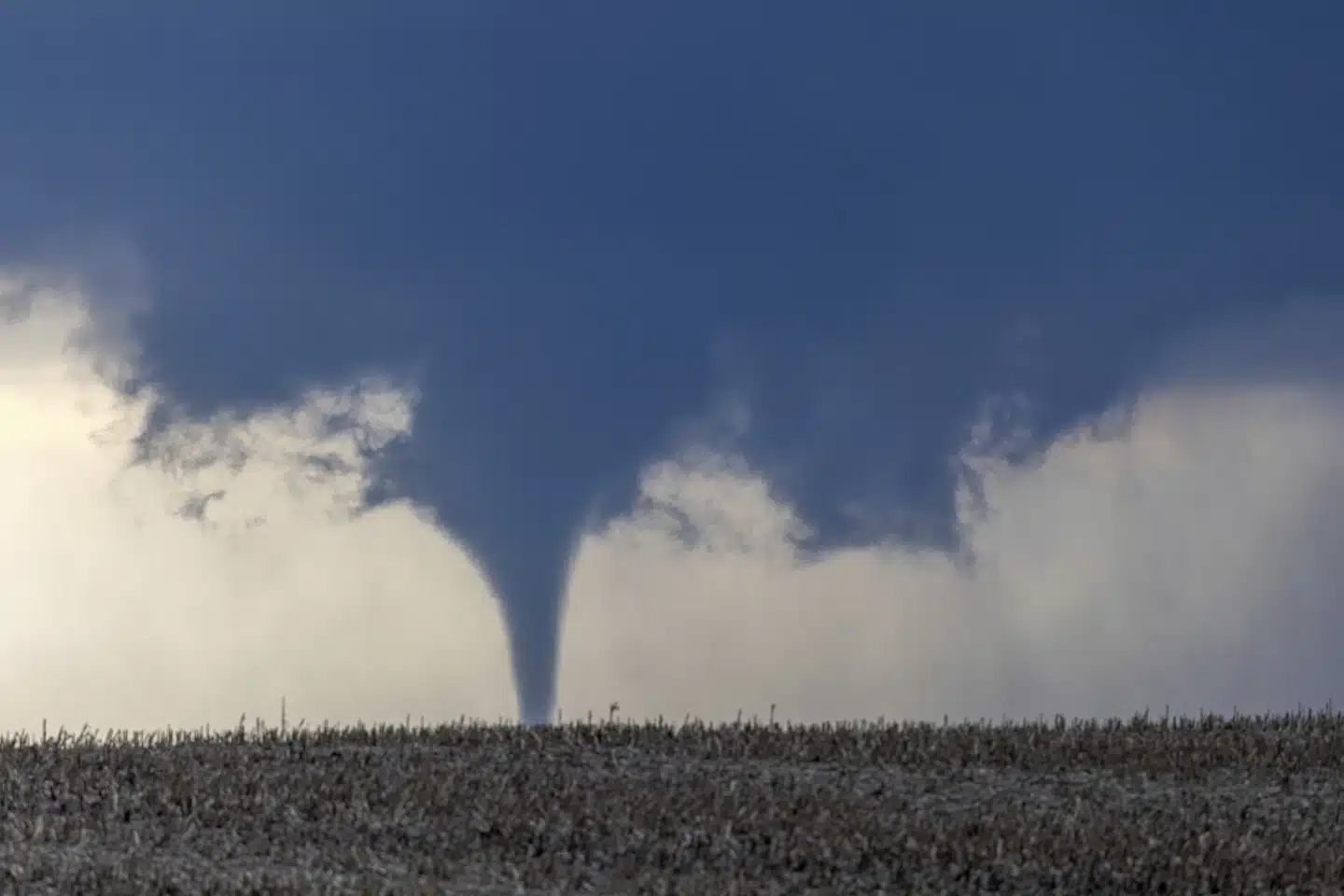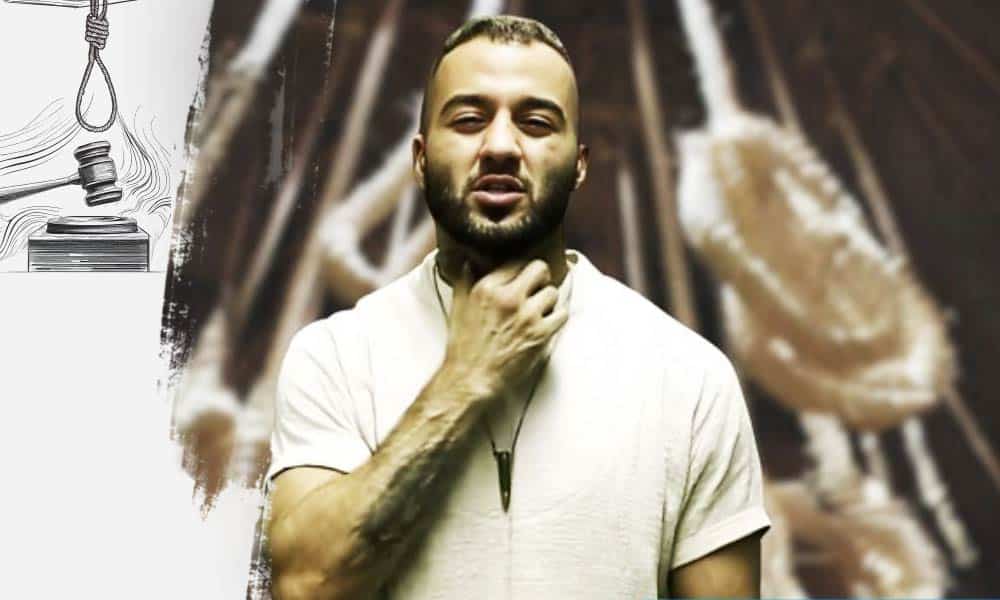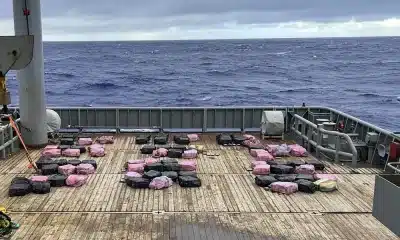News
New Zealand Elects Conservative Christopher Luxon As Premier After 6 Years Of Liberal Rule

AUCKLAND — New Zealand’s next prime minister will be Christopher Luxon, a former conservative businessman who won a decisive election on Saturday.
Following six years of a liberal government, which was presided over for the most part by Jacinda Ardern, the electorate opted for a change.
The precise composition of Luxon’s government remains uncertain as the process of ballot counting progresses.
Luxon arrived at an occasion in Auckland to jubilant applause. His wife, Amanda, and their children, William and Olivia, accompanied him to the stage. He expressed his sincere gratitude for the victory and eagerly anticipated diving into his new position. He thanked individuals from throughout the nation.
“By voting for change, you have reached for hope,” he declared.
The candidate’s campaign slogan, which pledged to “reorient the nation,” was chanted by his supporters.
Late on Saturday, departing Prime Minister Chris Hipkins, who replaced Ardern in January and presided over for nine months, informed supporters that he had urged Luxon to concede.
Hipkins expressed dissatisfaction with the outcome.
But I want you to be proud of what we’ve accomplished in the last six years,” he told Wellington supporters at an event.
New Zealand’s next prime minister will be Christopher Luxon, a former conservative businessman who won a decisive election on Saturday.
January saw the unexpected resignation of Ardern as prime minister, who stated she no longer had “enough in the tank” to perform the position to its full potential. Her last election triumph was decisive, yet her popularity declined due to the growing fatigue among the public regarding COVID-19 restrictions and the economic risks posed by inflation.
In her absence, 45-year-old Hipkins assumed the role of leader. Before that, he held the position of education minister and oversaw the efforts to address the coronavirus pandemic.
Upon tallying most of the ballots, Luxon’s National Party had approximately 40% of the vote. By the proportional voting system of New Zealand, it is anticipated that Luxon, 53, will unite with the libertarian ACT Party.
In contrast, the Labour Party, led by Hipkins, received just over 25% of the vote, roughly half of what it received in the previous election under Ardern.
National was neck and neck in the contest for Ardern’s former electorate, Mount Albert, which would have been especially detrimental for Labour should it lose the seat. Long a bastion of Labour support, the seat was additionally occupied by Helen Clark, an additional former Labour prime minister.
Melissa Lee, the candidate for the seat on behalf of the National Party, expressed to The Associated Press that she was both elated and apprehensive regarding the outcome in Mount Albert.
New Zealand’s next prime minister will be Christopher Luxon, a former conservative businessman who won a decisive election on Saturday.
“Labour has held power since 1946.” “Forever, it has been the largest and safest Labour seat,” she declared. “A victory would be absolutely phenomenal.”
People told Lee while she was pounding on doors that they were weary of the current administration, concerned about the state of the economy, and opposed to the escalating cost of living.
Established conservative pollster David Farrar stated that, after all the ballots were tallied, Labour would likely retain the seat. However, he stated that his initial assessment of the nationwide election process was that it was becoming a “bloodbath” for the left.
A crackdown on crime and tax cutbacks for middle-income earners are two of the pledges made by Luxon. Hipkins had pledged to eliminate sales tariffs on fruits and vegetables and provide free dental care to individuals under 30.
The election also has implications for the government’s rapport with Indigenous Māori. Luxon has committed to eliminating the Māori Health Authority, asserting that it establishes dual health systems. Hipkins asserts that he is pleased with these co-governance initiatives and has charged Luxon with endorsing bigotry.
After assuming leadership in January, Hipkins was confronted with a crisis in New Zealand shortly after devastating flooding and a cyclone struck the country. He swiftly abandoned several of Ardern’s more controversial policies and pledged to return to a “back to basics” strategy centered on addressing the escalating cost of living.
New Zealand’s next prime minister will be Christopher Luxon, a former conservative businessman who won a decisive election on Saturday.
The largest city of Auckland’s warm spring weather motivated voters, as lines formed outside some polling places. Voter turnout was lower in advance of Election Day compared to recent elections.
During a six-week election campaign, Luxon and Hipkins campaigned for the cameras while traveling the nation.
Amid a lively gathering in Wellington earlier this week, Luxon, a former CEO of Unilever Canada and Air New Zealand, declared his intention to implement strict measures against criminal organizations.
Luxon stated, “I must warn you that crime in this country is out of control.” “Moreover, both law and order will be reinstated, as will individual accountability.”
A new tunnel project, which Luxon pledged to construct to alleviate the capital’s congested traffic, also garnered applause.
According to political observers, despite being a relative political newcomer, Luxon held his own against the more seasoned Hipkins during televised debates. However, Luxon also committed gaffes when asked how much he spent on food each week during a 1News debate.
On social media, his response of “about sixty dollars” (approximately $36) was mocked as evidence that he was ignorant of the cost of living.
SOURCE – (AP)
News
Retrial Of Harvey Weinstein Unlikely To Occur Soon, If Ever, Experts Say

Legal experts have stated that the retrial of Harvey Weinstein in New York, a previously highly regarded figure in the film industry, is unlikely to take place in a courtroom in the near future, if at all. This comes as one of the two women who are deemed vital to the case expressed uncertainty about testifying again.
The New York Court of Appeals issued a verdict on Thursday invalidating the 2020 conviction of the former influential figure in the film industry. Prosecutors alleged that he coerced young actors into fulfilling his sexual needs by using his authority to control their professional success. He is incarcerated in New York state following his conviction in a comparable case in California.
In a 4-3 ruling, the appeals court nullified a 23-year prison sentence and mandated a new trial for Weinstein. The court determined that the trial judge made mistakes by allowing three women to testify about allegations that were not included in the charges, as well as by permitting questions about Weinstein’s past instances of “bad behavior” if he chose to testify.
He did not. The individual was found guilty of engaging in non-consensual oral sexual activity with a television and film production assistant, as well as committing third-degree rape against an aspiring actor in 2013.
AP – VOR News Image
Retrial Of Harvey Weinstein Unlikely To Occur Soon, If Ever, Experts Say
According to discussions with several lawyers on Friday, it is anticipated that obtaining a new trial for the 72-year-old movie mogul, who is currently in poor health and has become a symbol of the #MeToo movement, will be a lengthy process. It is still being determined whether a new trial will begin next year.
Joshua Naftalis, a former Manhattan federal prosecutor now in private practice, expressed his belief that there will not be a trial in the end. “I believe he is unwilling to undergo another trial, and I believe the state is uninterested in prosecuting him again.”
Naftalis suggested that all parties might pursue a resolution, such as a plea, in order to save his accusers from the distress of a second trial.
Deborah Tuerkheimer, a professor at Northwestern University Pritzker School of Law and former assistant district attorney in Manhattan, stated that the decision to have a second trial will depend on the inclinations of the women who would be required to testify once more and undergo the arduous process of a retrial.
“Ultimately, the decision will depend on their willingness and capability,” she stated.
Jane Manning, the director of Women’s Equal Justice, a nonprofit organization that offers advocacy assistance to survivors of sexual assault, concurred that the primary concern is whether the two women are willing to submit testimony once more.
If the conditions are met, Manhattan District Attorney Alvin Bragg will unequivocally pursue a new trial for the case, as stated by Manning, who previously handled sex crime prosecutions during her tenure at the Queens district attorney’s office in the late 1990s and early 2000s.
Tama Kudman, a criminal defense attorney based in West Palm Beach, Florida, who also practices law in New Jersey and New York, stated that it is probable that prosecutors will soon engage in discussions with crucial witnesses in preparation for a new trial.
AP – VOR News Image
Retrial Of Harvey Weinstein Unlikely To Occur Soon, If Ever, Experts Say
“Ultimately, the decision to undergo another trial lies with the individuals themselves,” Kudman remarked, emphasizing that prosecutors must assess the witnesses’ ability to endure a second legal proceeding. “Having the willingness and having the desire are two distinct concepts.”
The legal proceedings are still underway, and Weinstein is set to appear in court in Manhattan on Wednesday. This appearance will likely determine the location of his incarceration during his wait for a fresh trial.
Bragg’s office promptly issued a statement following Thursday’s public release of the appeals verdict, expressing its commitment to exhausting all available efforts to initiate a new trial for this matter.
However, legal experts assert that the path to a trial will involve protracted legal disputes between attorneys on the admissibility of evidence and testimony in a retrial.
During an electronic news conference on Friday, Miriam Haley, one of the key individuals involved in the charges against Weinstein, expressed her willingness to testify again in the event of another trial. However, when further questioned, she refrained from making a firm commitment to participate in a new trial.
Haley, a previous production assistant on the television show “Project Runway,” also known as Mimi Haleyi, gave evidence during Weinstein’s trial. She stated that she consistently expressed her refusal to Weinstein when he assaulted her inside his apartment in July 2006, forcefully engaging in oral sexual activity with her. In a civil complaint filed in 2020, Haley expressed enduring feelings of horror, humiliation, and persistent anguish.
During the press conference alongside her attorney, Gloria Allred, Haley expressed her strong disapproval of the appeals verdict, characterizing it as a profoundly discouraging message to victims of sexual assault worldwide.
She expressed that testifying was a distressing, draining, and frightening experience. She is still unsure whether she will testify in a retrial, as we are all still processing the court’s decision.
“I desire that it could be as effortless as confidently stating, ‘Certainly, I will undertake it once more!'” Haley stated.
She remarked that individuals possess a limited comprehension.
“It’s utterly absurd.” It is demanding. It isn’t easy. “You have been experiencing persistent fear for several years,” Haley stated. “In that case, you are experiencing harassment.” There are numerous things that people are unaware of, and I had to endure them. Indeed, I need to allocate a moment to contemplate that.
Allred stated during the press conference on Friday afternoon that Bragg’s office had not yet contacted Haley regarding her testimony.
Erika Rosenbaum, a Canadian actor who levied her allegations against Weinstein in 2017, has dedicated years to vocally denouncing harassment and abuse. However, she has not been summoned to provide testimony in either of Weinstein’s trials.
In an interview on Friday, she expressed that recounting her personal experience of abuse in the media was already distressing, and she can only fathom the added challenges of testifying in court, especially on two separate occasions.
AP – VOR News Image
Retrial Of Harvey Weinstein Unlikely To Occur Soon, If Ever, Experts Say
“Whenever I discuss the topic, whether it’s with the media or with a gathering of students or young individuals, I experience a sensation of increased body temperature and discomfort.” Strong bodily and automatic responses are accompanying the intense throbbing in my head. “It exacts a physical, mental, and emotional toll,” stated Rosenbaum.
She expressed that she envisions testifying as a frightening experience and desires to either testify on behalf of or with them.
“However, these women are incredibly courageous, and I hold them in high esteem and appreciation,” Rosenbaum remarked.
The standard practice of the Associated Press is to refrain from disclosing the identities of those who claim to have experienced sexual assault, unless those individuals explicitly consent to being identified, as is the case with Haley and Rosenbaum.
SOURCE – (AP)
World
Residents Begin Going Through The Rubble After Tornadoes Hammer Parts Of Nebraska And Iowa

The city of Omaha, located in Nebraska, is the subject of this article. On Saturday, residents began examining the debris following a tornado that tore through suburban Omaha, Nebraska. The tornado caused extensive damage to homes and businesses as it traveled miles across farmland and into residential areas.
A crowd assembled in the streets of the Elkhorn region in Omaha amidst the fragmented remnants of the residences. Nebraska Governor Jim Pillen intends to visit the area and after that conduct a press briefing on Saturday in Omaha.
The tornadoes that occurred on Friday night caused extensive destruction in the Midwest. One building collapsed, trapping numerous individuals inside, while hundreds of residences were either destroyed or damaged.
AP – VOR News Image
Residents Begin Going Through The Rubble After Tornadoes Hammer Parts Of Nebraska And Iowa
Multiple injury incidents have been documented. However, no deaths have been reported.
Three individuals sustained injuries in Lancaster County, Nebraska, as a result of a tornado striking an industrial structure, leading to its collapse while containing 70 occupants. Multiple individuals were confined. However, all individuals were successfully removed from the premises, and the injuries sustained were deemed non-fatal, as stated by the police.
A devastating tornadoes traveled a considerable distance on Friday, first affecting agricultural land before causing significant damage to residences and other buildings in the suburban areas of Omaha. Omaha has a population of 485,000 people and a metropolitan area of approximately 1 million.
Images shared on social media platforms also depict extensive destruction in the small town of Minden, Iowa, which is located approximately 30 miles (48 kilometers) northeast of Omaha.
During a briefing on Friday, Jeff Theulen, the top deputy of the Pottawattamie County Sheriff’s Office, stated that 40 to 50 homes had been entirely demolished. Two injuries were documented, but none risked the individuals’ lives.
According to him, school buses have been sent to provide transportation for residents who require it to leave the area. He requested that others refrain from entering the area due to its high level of hazard, characterized by fallen power lines and heaps of debris where houses once stood.
“It is truly distressing to witness these individuals who have suffered the loss of their homes, vehicles, and essentially their entire livelihood until they are able to reconstruct it,” he expressed.
The Saturday forecast was foreboding. The National Weather Service issued tornado watches for northern Texas and western Oklahoma on Saturday morning.
“There is a possibility of tornadoes, potentially significant tornadoes, occurring on Saturday afternoon and evening,” stated Bruce Thoren, a meteorologist from the weather service in Norman, Oklahoma.
Areas of Iowa, Kansas, Missouri, Nebraska, and Arkansas were under tornado warnings. Meteorologists warned that significant hail and powerful gusts of wind could occur.
Omaha police Lieutenant Neal Bonacci reported that numerous residences in Omaha, particularly in the Elkhorn district in the city’s western region, sustained damage on Friday. In response, police officers and firefighters visited households to provide assistance.
Several recently constructed, spacious residences in a specific section of Elkhorn sustained significant damage. A minimum of six structures were severely damaged, with one completely demolished and others experiencing significant damage to their upper sections. A multitude of emergency cars swiftly arrived at the location.
AP – VOR News Image
Residents Begin Going Through The Rubble After Tornadoes Hammer Parts Of Nebraska And Iowa
According to Pat Woods, a resident of Elkhorn, we observed the touchdown of the object approximately 200 yards away before seeking shelter. “We were able to perceive its approach.” Upon our arrival, we discovered that our fence had disappeared. As we gazed towards the northwest, we observed that the entire neighborhood had vanished.
Kim Woods, his spouse, stated, “The entire residential area located to the north of our location has been severely devastated.”
According to Dhaval Naik, who claims to work with the owner of the residence, three individuals, including a toddler, were present in the basement of the destroyed house during the tornadoes. However, they managed to escape unharmed.
A video from KETV-TV depicted the evacuation of a woman from a destroyed residence in Blair, a city located to the north of Omaha. The woman was transported on a stretcher.According to Bonacci, two individuals were brought for medical care, both of whom sustained minor injuries.
“The few serious injuries were prevented because people were given warnings,” stated Omaha Police ChiefTodd Schmaderer.
A tornado warning was issued in the Omaha vicinity on Friday afternoon, coinciding with the scheduled departure of students from school. Several schools implemented a shelter-in-place protocol for kids until the storm subsided.
“Was it a single continuous tornado or were there multiple tornadoes?” Kern from the National Weather Service inquired.
According to her, the agency intended to dispatch numerous teams in the next few days to assess the quantity and intensity of the tornadoes. This process could last up to a fortnight.
A tornado struck an area on the eastern periphery of Omaha, causing direct damage to sections of Eppley Airfield, the city’s airport. Aircraft operations were temporarily suspended to assess the damage, but the facility was subsequently reopened, according to Steve McCoy, Chief Strategy Officer of the Omaha Airport Authority.
AP – VOR News Image
Residents Begin Going Through The Rubble After Tornadoes Hammer Parts Of Nebraska And Iowa
Although the tornadoes did not directly strike the passenger terminal, McCoy stated that individuals promptly sought refuge in storm shelters until the tornadoes subsided.
Following its path through the airport, the tornado over the Missouri River entered Iowa, specifically to the north of Council Bluffs.
According to sheriff’s officials, in Lancaster County, three individuals sustained injuries as a result of the collapse of an industrial facility. Additionally, there have been reports of a train that has tipped over near Waverly, Nebraska.
Approximately 10,000 customers in the Omaha area experienced a power outage, as reported by the Omaha Public Power District. On Saturday morning, the number had decreased to slightly over 4,300.
Pillen, the governor of Nebraska, announced on the social media platform X that he had directed the allocation of state resources to assist in the emergency response and help first responders evaluate the extent of the damage.
SOURCE – (AP)
News
Rapper in Iran Sentenced to Death For Criticizing Regime

A rapper in Iran who rose to prominence for his rhymes about Mahsa Amini’s death in 2022 and criticism of the Islamic Republic has been sentenced to death, his lawyer and rights campaigners said Thursday.
The death sentence handed down to 33-year-old metal shop worker Toomaj Salehi remains unclear, as even Iran’s state-run IRNA news agency and judiciary have yet to formally announce it.
However, the announcement attracted immediate worldwide criticism from US and UN experts, who saw it as a symptom of Tehran’s ongoing assault on all dissent following years of large rallies in the country.
“Art must be allowed to criticize, provoke, and push the boundaries in any society,” a panel of United Nations independent experts on Iran said in a statement Thursday.
The news broke on Wednesday, following a report by Iran’s reformist The Shargh newspaper reported that Salehi had been sentenced to death by a Revolutionary Court in Isfahan, a key Iranian city recently attacked by an apparent Israeli attack. Closed-door sessions, secret evidence, and scant rights for people on trial are common in Iran’s revolutionary courts.
Rapper to Appeal Sentence
Amir Raisian, Salehi’s lawyer, told The Associated Press on Thursday that he had received notice of the death sentence against his client. Raisian said he intended to seek an appeal.
Salehi’s case arises from Amini’s death in 2022, following her arrest by police for not wearing a hijab to their liking. According to United Nations investigators, Iran was responsible for Amini’s death and forcefully suppressed mostly peaceful rallies during a months-long security crackdown that killed more than 500 people and jailed over 22,000 others.
Salehi rapped about Amini in one YouTube video, saying, “Someone’s crime was dancing with her hair in the wind.”
In another lyric, he prophesies the end of Iran’s theocracy. “Your entire past is dark, the government that sucked the light out of your eyes. We begin at the base of the pyramid and work our way up. This is the year of failure after forty-four years in power.”
His other songs were obscene, criticizing the all-volunteer Basij component of Iran’s paramilitary Revolutionary Guard and mentioning Supreme Leader Ayatollah Ali Khamenei.
Salehi was first sentenced to six years in prison, but he was released after Iran’s Supreme Court returned the case to the lower court due to irregularities in his original sentence.
Released on Bond
Salehi was released on bond, but was arrested again in November after claiming in a video message that he had been tortured following his detention in October 2022. At the time, state media aired a video of him blindfolded and apologizing for his statements, which were most likely uttered under duress.
Iran’s judiciary refused to acknowledge the death sentence, despite IRNA referring to “reports” that he had received it.
A death sentence based on the reversal of a lesser sentence is exceedingly unprecedented in Iran, presumably indicating how seriously Iran’s theocracy took Salehi’s statements. It also comes after other journalists, activists, and singers have been targeted after the “Women, Life, and Freedom” protests against Amini.
An Iranian artist, who received a Grammy presented by US first lady Jill Biden, was condemned to more than three years in prison for his hymn supporting the 2022 protests Activists quickly denounced the rappers sentence.
“This grotesque manipulation of the judicial process aims to silence dissent,” Hadi Ghaemi of the New York-based Center for Human Rights in Iran stated. “Toomaj’s detention arises from his public opposition to state tyranny. It is critical that supporters of free speech and dissent come together to demand his immediate release.”
Washington criticized the sentencing as well.
“This is just another example of the Iranian regime’s horrific and pervasive human rights abuses,” said State Department spokesperson Vedant Patel on Wednesday. “We once again condemn the Iranian regime’s … use of the death sentence as a tool to suppress people’s human rights and fundamental freedoms.”
-
Celebrity5 months ago
Shane MacGowan, Lead Singer Of The Pogues And A Laureate Of Booze And Beauty, Dies At Age 65
-
Entertainment5 months ago
Robert Downey Jr. Won’t Be Returning To The Marvel Cinematic Universe As Tony Stark
-
Politics5 months ago
Former US Secretary Of State Henry Kissinger Dies Aged 100
-
Politics5 months ago
Unveiling the Power and Influence of The Conservative Treehouse
-
Sports4 months ago
Saints’ Aggressive Play-Calling Ends Up Coming Back To Hurt Them In Loss To Rams
-
Business5 months ago
Tesla’s Cybertruck Hits The Market With A Higher Price Tag And Plenty Of Challenges
















































